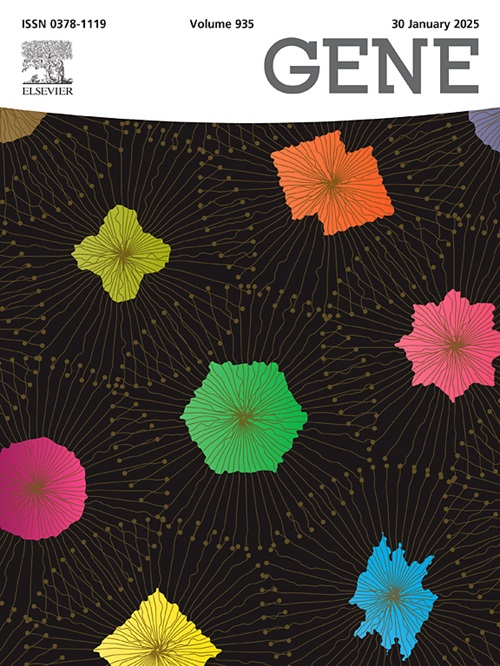Functional analysis of SpHMA1 N-terminus in yeast: regulation of cadmium (Cd) transport by his-rich motifs
IF 2.4
3区 生物学
Q2 GENETICS & HEREDITY
引用次数: 0
Abstract
Cadmium (Cd) poses significant toxicity risks to most biological systems. In the hyperaccumulator Sedum plumbizincicola, the HMA1 plays a key role in Cd detoxification through chloroplast–mediated process. Our previous work demonstrated that SpHMA1 actively exports Cd from chloroplasts, thereby protecting photosynthesis by reducing Cd accumulation within these organelles. In this study, we identified a Cd–selective functional domain in SpHMA1 and characterizes two histidine–rich motifs within its N–terminal region. Through heterologous expression of full–length SpHMA1 and its N–terminal truncation mutants in yeast, we systematically analyzed their functional roles in heavy metal transport. Under Cd stress, SpHMA1Δ2–46–expressing cells showed altered growth patterns compared to full–length SpHMA1 transformants, despite comparable total Cd accumulation. Notably, truncation of the first 80 amino acids (SpHMA1Δ2–80) significantly increased metal sensitivity (Cd, Zn, Cu) in Δycf1 yeast, accompanied by a significant increase in intracellular Cd accumulation. Complete deletion of the histidine–rich domain (SpHMA1Δ2–107) restored metal tolerance to empty vector–control levels. Our findings demonstrate functional differentiation between the dual his–rich motifs in heavy metal transport regulation, advancing understanding of HMA1′s molecular mechanisms in plant metal homeostasis.
酵母SpHMA1 n -末端的功能分析:富his基序对镉(Cd)转运的调控。
镉(Cd)对大多数生物系统具有重大的毒性风险。在高蓄积植物Sedum plumbizincicola中,HMA1在叶绿体介导的Cd解毒过程中起关键作用。我们之前的研究表明,SpHMA1积极地从叶绿体中输出Cd,从而通过减少这些细胞器内Cd的积累来保护光合作用。在这项研究中,我们在SpHMA1中鉴定了一个cd选择性功能域,并在其n端区域鉴定了两个富含组氨酸的基序。通过在酵母中异源表达全长SpHMA1及其n端截断突变体,系统分析了它们在重金属运输中的功能作用。在Cd胁迫下,SpHMA1Δ2-46-expressing细胞表现出与全长SpHMA1转化体相比的生长模式改变,尽管总Cd积累相当。值得注意的是,截断前80个氨基酸(SpHMA1Δ2-80)显著增加了Δycf1酵母的金属敏感性(Cd, Zn, Cu),同时细胞内Cd积累显著增加。完全删除富组氨酸结构域(SpHMA1Δ2-107)将金属耐受性恢复到空病媒控制水平。我们的研究结果证明了HMA1在重金属转运调控中的功能差异,促进了对HMA1在植物金属稳态中的分子机制的理解。
本文章由计算机程序翻译,如有差异,请以英文原文为准。
求助全文
约1分钟内获得全文
求助全文
来源期刊

Gene
生物-遗传学
CiteScore
6.10
自引率
2.90%
发文量
718
审稿时长
42 days
期刊介绍:
Gene publishes papers that focus on the regulation, expression, function and evolution of genes in all biological contexts, including all prokaryotic and eukaryotic organisms, as well as viruses.
 求助内容:
求助内容: 应助结果提醒方式:
应助结果提醒方式:


